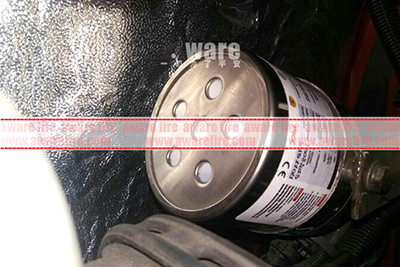Kategorien
- Unser Blog (59)
- Technology Support (15)
Eisenbahnlokomotiven haben eine hundertjährige Entwicklungsgeschichte und viele Jahre technischer Innovation. Heute, we talk about the fire protection of railway locomotives. Erstens, wir sollten über das Wissen über Eisenbahnlokomotiven sprechen.

Die Eisenbahnlokomotive selbst hat kein Antriebsgerät, whether it is a passenger locomotive or a freight locomotive; Wir müssen viele Wagen mit dem Zug verbinden, um einen Zug zu bilden, and then it can move only after being pulled by a locomotive. Deswegen, Die Lokomotive ist die grundlegende Kraft des Eisenbahntransports.
There are many kinds of locomotives for the railway. According to the original power of the locomotive, Es gibt Dampflokomotiven, Diesellokomotiven, und elektrische Lokomotiven.
The application of steam locomotives has a 170-year history. Es wandelt die Wärmeenergie eines Kraftstoffs um (Kohle, Öl, Holz) in mechanische Energie durch einen Dampfmotor,
Es wandelt die Wärmeenergie eines Kraftstoffs um (Kohle, Öl, Holz) in mechanische Energie durch einen Dampfmotor, Damit den Zug in Bewegung bringen. The components of a steam locomotive are the boiler, the steam turbine, the frame, the coal and water cars, the coupler, the buffers, and the brakes.
The steam locomotives are characterised by low thermal efficiency, high energy consumption, and low conveying capacity, and the people of the world no longer use them.
Eine Diesellokomotive ist eine Lokomotive, die von einem Dieselmotor angetrieben wird, Its characteristics are high thermal efficiency, lange ununterbrochene Arbeitszeit, and suitability for long-distance operation.
The diesel locomotives have two styles: electric drive and hydraulic drive.
Die elektrische Lokomotive selbst trägt keine elektrische Energie, es kommt darauf an, unterwegs elektrische Energie aus dem Oberleitungsdraht zu gewinnen. and the traction motor drives the locomotive forward.
Das Kraftwerk sendet 110 nach 220 kV three-phase power frequency AC power through the transmission line to the railway traction substation, was liefert 25 nach 27.5 kV single-phase power frequency AC power to the catenary for electric locomotives.
An electric locomotive mainly contains the vehicle body, Joggingausrüstung, Unterrahmen, Koppler und Puffergerät, Bremsgerät, und eine vollständige Menge an elektrischen Geräten.
Die elektrische Lokomotive hat die Vorteile einer großen Leistung, schnelle Startgeschwindigkeit, gut klettern, and easy to implement high-speed and heavy-load.
Momentan, Aufgrund der umfassenden Entwicklung der elektrischen Leistung und der kontinuierlichen Entwicklung neuer Energiekraft, Die elektrische Lokomotive ist die am weitesten verbreitete geworden.
Die Hochgeschwindigkeitsstrecke, U-Bahn, und leichte Schiene, die wir verwenden, werden alle von elektrischen Lokomotiven angetrieben.
aber, egal welche Art von Lokomotive, including an electric locomotive, Sie erzeugen viel Wärme, wenn sie in Betrieb sind.
There are many pipeworks on a locomotive, making the internal space limited, which can easily lead to thermal runaway after long periods of travelling, ageing wiring, and hot weather.
Der Verlust einer durch Feuer verursachten Lokomotiv nach einem thermischen Ausreißer ist riesig, und der wirtschaftliche Verlust beträgt Tausende von Dollar. Deswegen, wir müssen uns mit der Frage des Brandschutzes bei Lokomotiven befassen, und es ist notwendig, ein geeignetes Brandschutzsystem für Lokomotiven auszuwählen.
Wie wir bereits erwähnt haben, there is a lot of pipework and limited space, so the fire extinguishing system for locomotives should have the following characteristics:
Momentan, Großes Gas, Schaum, und wasserfeuer Feuerlöschsysteme sind nicht für Eisenbahnlokomotiven geeignet. Die verbleibenden zwei Produkte werden höchstwahrscheinlich die Wahl für den Brandschutz von Lokomotiven sein, sind: Aerosol -Brandschutz oder Brandschutzrohr-Unterdrückungssystem.
Hiermit, let us compare these two systems: the Aerosol Fire Suppression System and the Fire Trace System.
Das Aerosolsystem hat die folgenden Hauptvorteile:
The fire trace system has the following main advantages:
Deswegen, from the point of view of safety and convenience, the aerosol fire extinguishing system will be more suitable for railway locomotives.
Many people are worried that they don’t know how to install aerosol systems on railway locomotives. The installation on a railway locomotive is simple. The steps are as follows:
Magnet-attached mounting is a simpler and more convenient way of mounting. We mount the fire extinguishing device directly to the iron plate of the locomotive engine.
The main steps in wiring are as follows
Unsere Händler auf der ganzen Welt haben viele Installationsfälle. In the following, we list some of them:
Die Wahl eines Aerosol -Brandunterdrückungssystems als Eisenbahnlokomotive -Brandschutzlösung ist machbar.